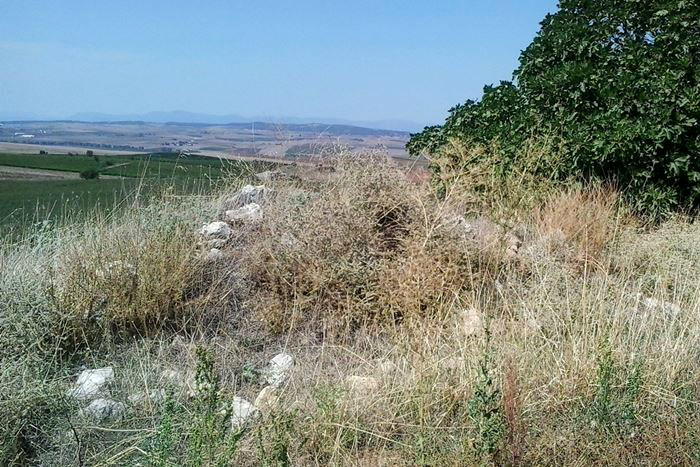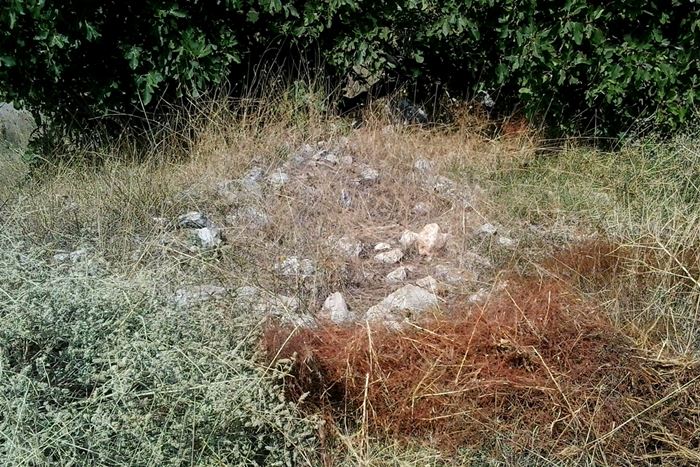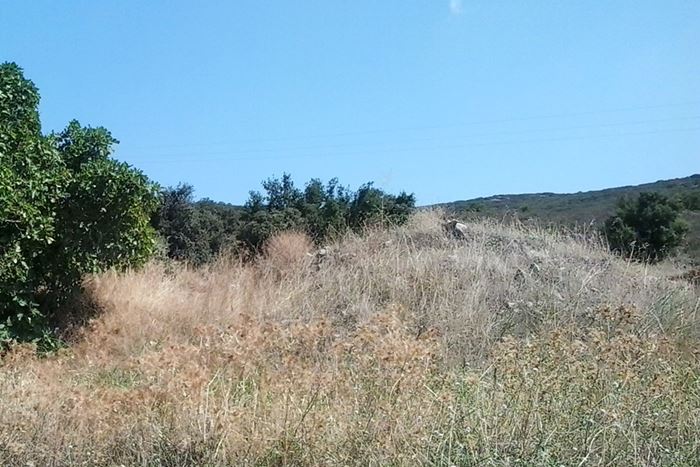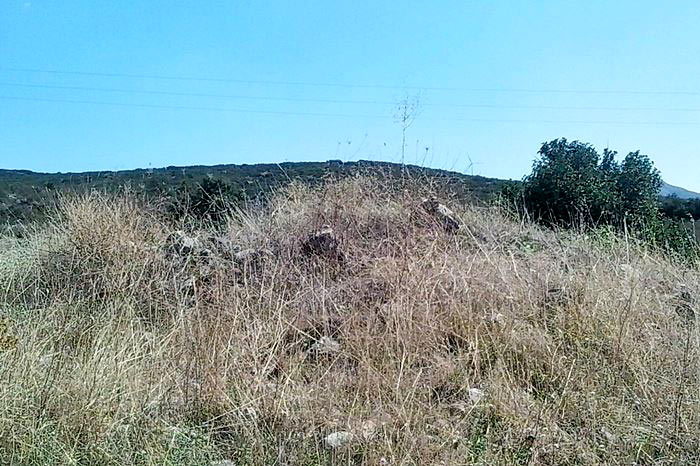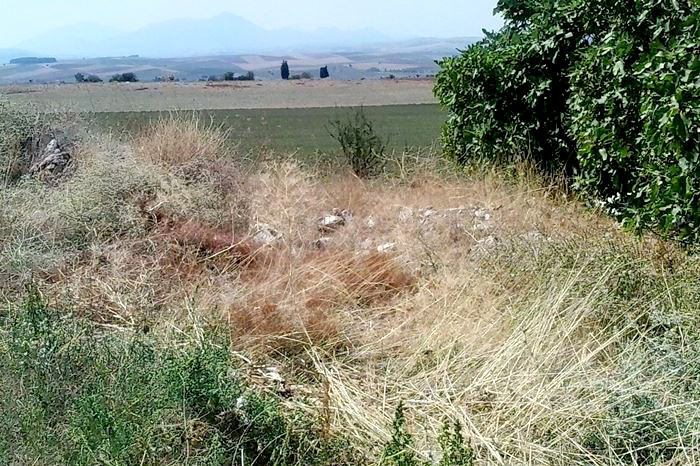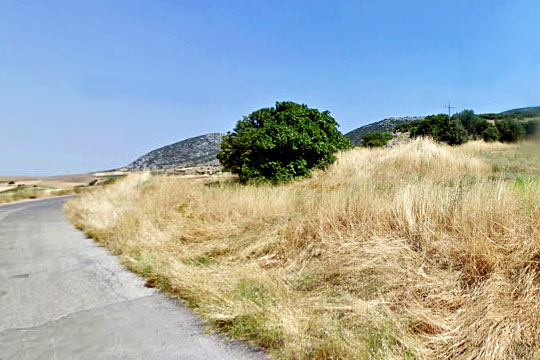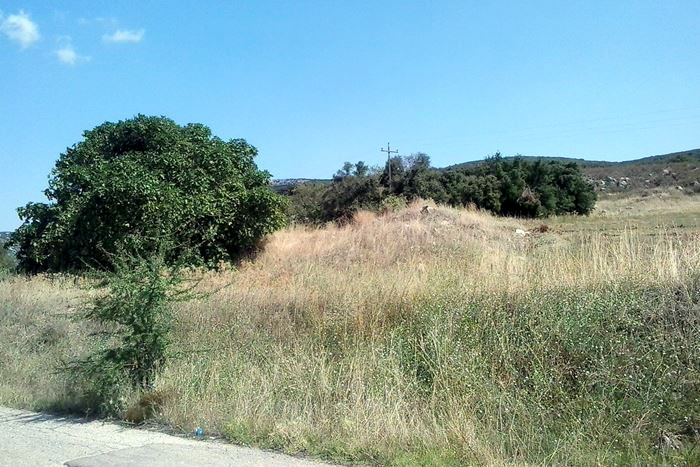Erythres, Mandra-Eidyllia, Western Attica,Attica
Bubuka tower
| Location: |
| 4.5 km east of Erythres in Attica region, on the road to village Dafni of Boeotia region |
| Region > Prefecture: | 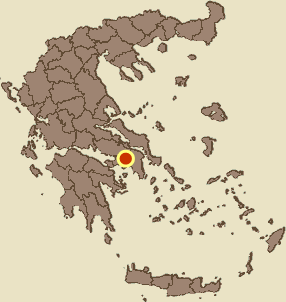 |
| Attica Western Attica | |
| Municipality > Town: | |
| City of Mandra-Eidyllia • Erythres | |
| Altitude: | |
|
Elevation ≈ 395 m (Relative Height≈0 m) |
| Time of Construction | Origin | |
| Perhaps post-medieval | Unknown |
|
| Castle Type | Condition | |
| Ruined Tower |
Few Remains
|
Slight and inconspicuous remains of a building, that was probably a tower, on the road connecting the villages Erithres (in West Attica) with Dafni (in Boeotia). The location belongs to Attica but it is more reasonable to classify the tower in the group of the medieval (and newer) towers of Boeotia.
The Name of the Castle
A little further south of the tower there are a few other ruins. This was the location of a hamlet named “Bubuka” from the name of an Albanian family who lived here.
The Albanians had populated Boeotia after 1382 when they got the permission by the king Pedro IV de Aragón to settle in the territories of the Duchy of Athens. (Boeotia between 1311 and 1388 was a Catalan possession and king Piedro had also the title of the “Duke of Athens and Neopatras”).
History
The time of construction of the tower is not known. The hamlet may have been existed as early as the late 14th century, but the tower itself may have been built much earlier or much later. We do not know, and the remains do not help to estimate a chronology.
The only testimony to the existence of the tower comes from the English traveler colonel William Martin Leake who visited this part of Greece in January 1806. Leake, who is accurate in his descriptions, reports that in Bubuka he found 10 houses and the tower of Sιpachi [1]. (The Sipachi were members of the elite Ottoman cavalry corps who in time of piece were the administrators -not owners- of fiefs or timar.)
So, the tower was in use in the Ottoman period. But this does not necessarily mean that it was a construction of that period.
Modern scholars like Peter Lock [2]and John Bintliff [3] also mention the tower making a reference to Leake but, apparently, without having seen the remains.
The tower was spotted by the Kastrologos’ team thanks to an elderly resident of Dafni who showed us the location. According to him, the tower was preserved at a considerable height until the 1950s when it was demolished by the locals in order to use its materials for the construction of the nearby chapel of Saint George.
| First entry in Kastrologos: | September 2018 |
Sources
- [1] : William Martin Leake, “Travels in Northern Greece”, London 1835, Vol.2, pp 327
- [2] : Peter Lock, “The Frankish Towers of Central Greece, The Annual of the British School at Athens” , Vol. 81 (1986), pp. 107
- [3] : John Blintiff, “The archaeological survey of the Valley of the Muses and its significance for Boeotian History”, source: La Montagne des Muses 193-224, Geneva 1996
- [4] Research, finding and pictures by Ioannis Dedes.
|
|
| Access |
|---|
| Approach to the monument: |
| From Erythres take the asphalt road to Dafni to the east. Around the middle of the distance you can spot the ruins under a fig tree. |
| Entrance: |
| Free access |



